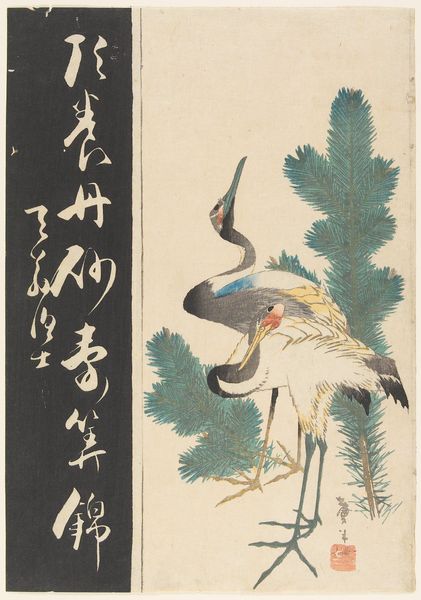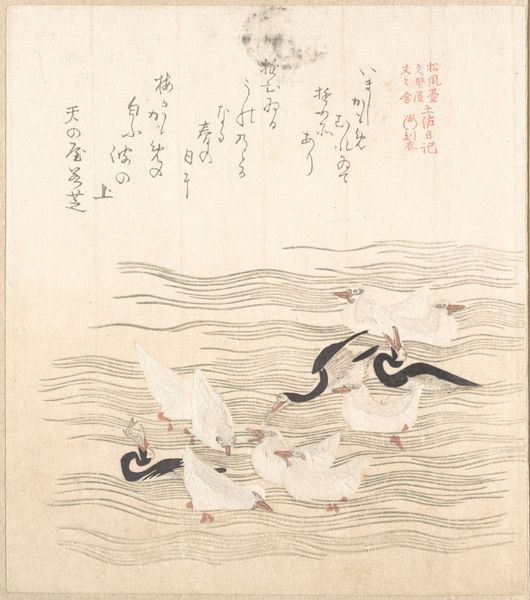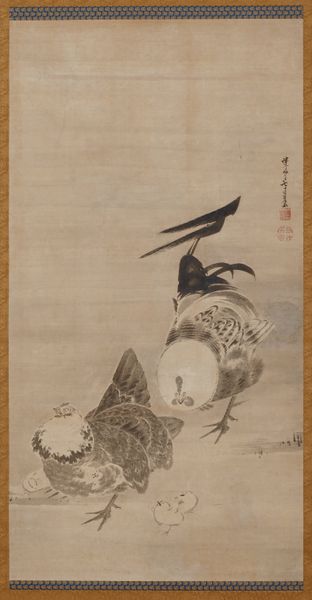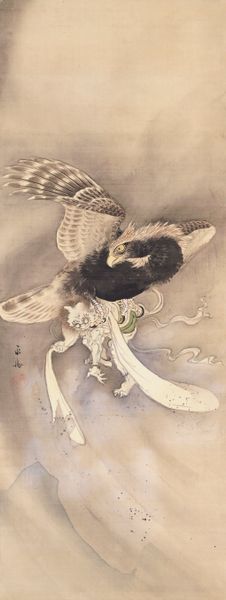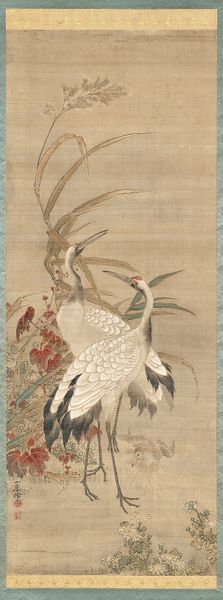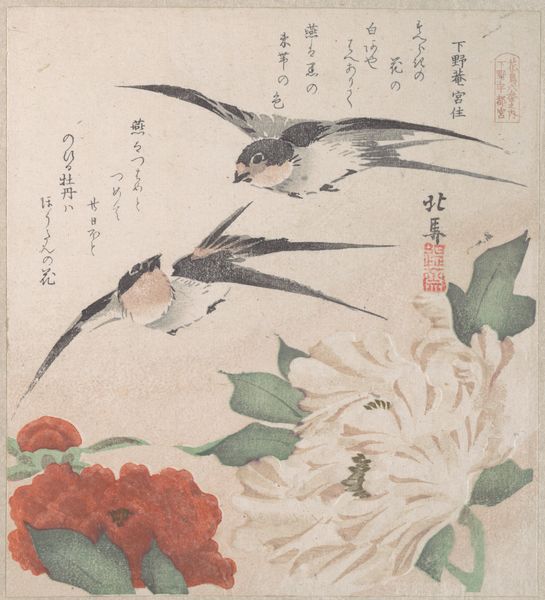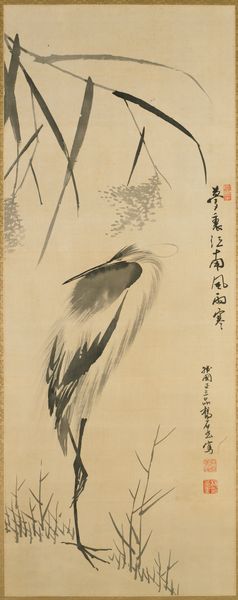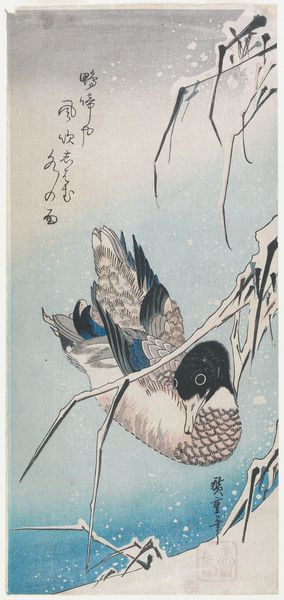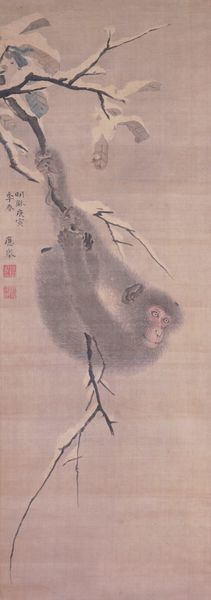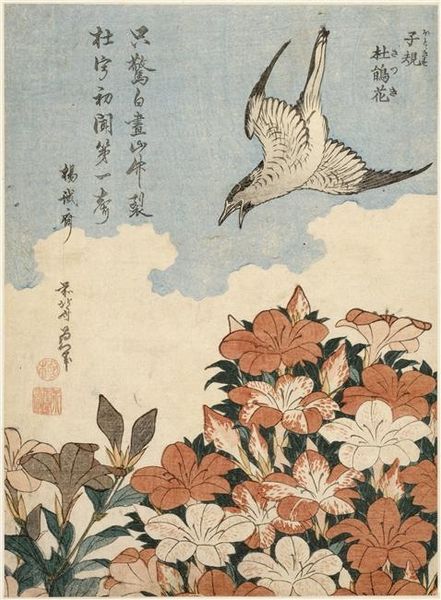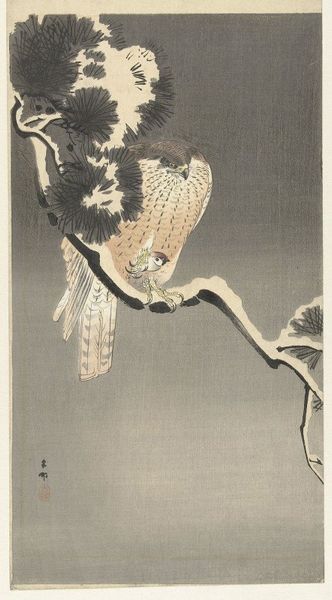
paper, watercolor, ink
#
asian-art
#
landscape
#
ukiyo-e
#
japan
#
figuration
#
paper
#
watercolor
#
ink
#
watercolor
Dimensions: 39 3/8 x 21 1/8 in. (100.01 x 53.66 cm)
Copyright: Public Domain
Curator: Standing here at the Minneapolis Institute of Art, we’re looking at "Falcon Attacking Goose," a watercolor and ink on paper by Yoshida Rankō, dating back to around 1780. Editor: My gut reaction? Intense. It’s like watching a scene frozen mid-action, all feathers and desperation. A snapshot of predator versus prey, starkly white against the canvas. There is something so brutal and delicate at the same time, that reminds me of the theater of life in general. Curator: Absolutely. Rankō, working within the ukiyo-e tradition, really emphasizes the dynamics here, the composition cleverly uses the vertical scroll format to highlight the unfolding drama. Ukiyo-e often depicts the floating world – pleasure and leisure – but here, we see the harsher side of existence depicted. Editor: I feel a pull towards the texture. Look at the detail on those feathers! It invites this sort of ASMR sense to witness, I'm tempted to try to reproduce it to better understand how the paper takes the ink. It makes you wonder, doesn’t it, how much an artist needs to *become* the thing they're painting to render it this viscerally? I think Yoshida felt both, he really embodied both animals. Curator: He was certainly an observer, transforming everyday subjects to emphasize artistic license through an attention to detail that does reflect Japanese printmaking methods as a whole. This era of craftsmanship involved collective labor – papermakers, block cutters, printers each contributing their skills to bring these images to life. Editor: It's that human touch you see. That reminds us it wasn't a photograph. I imagine Ranko himself holding this and getting inspiration directly from it. It is what you feel most from the print. But if the image were a dream it would be a nightmare for that goose! It would represent fear, danger, like an itch under your skin that never stops... Curator: Indeed. This piece highlights not just the skill in execution, but the cultural and historical processes of print production. Thinking about labor and its social context makes you view it a little differently I'd wager? Editor: Completely. Now, that I am thinking about the materiality of its process, what feels like brutal spontaneity to the scene, has roots based in intention and even communal labor. Art can show how we all relate to labor as part of the cycle, one goose for dinner... I hope he used every last bit.
Comments
No comments
Be the first to comment and join the conversation on the ultimate creative platform.

